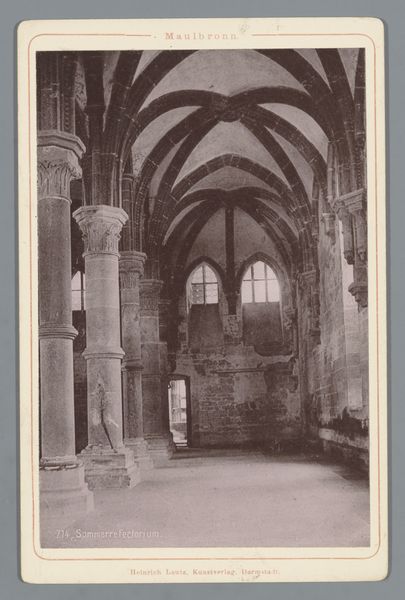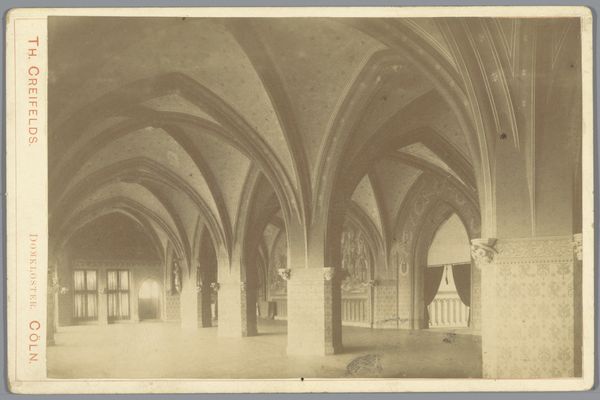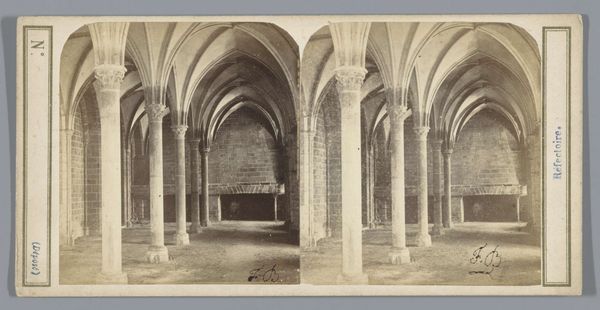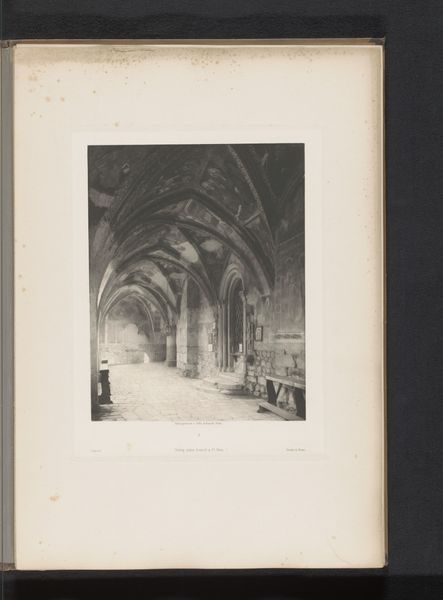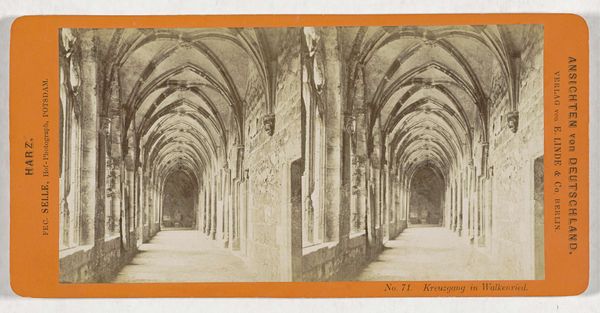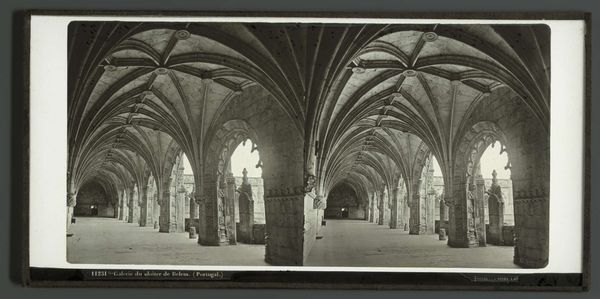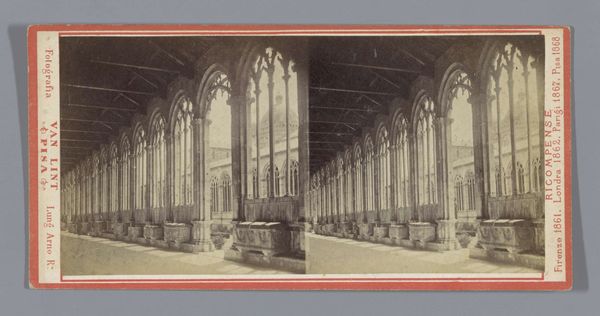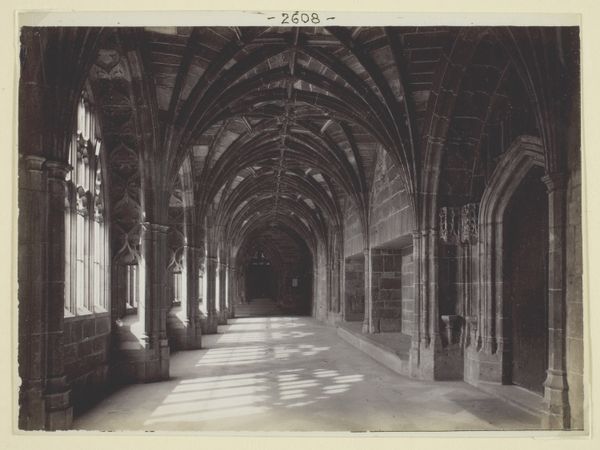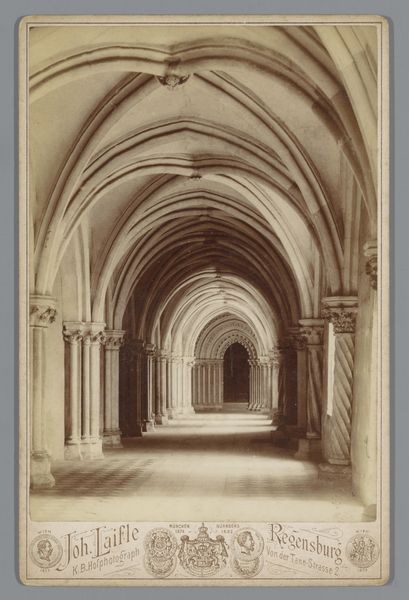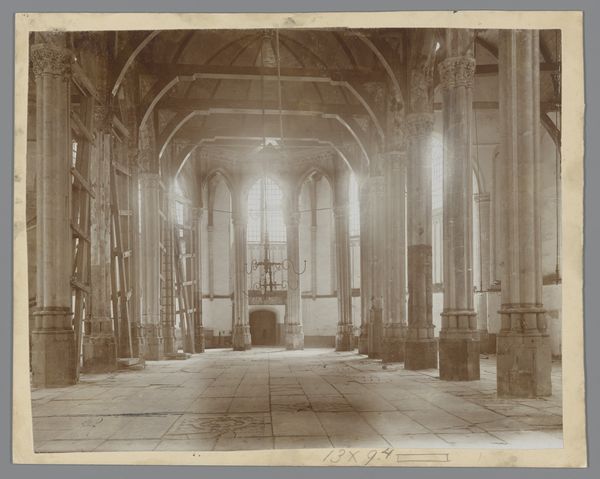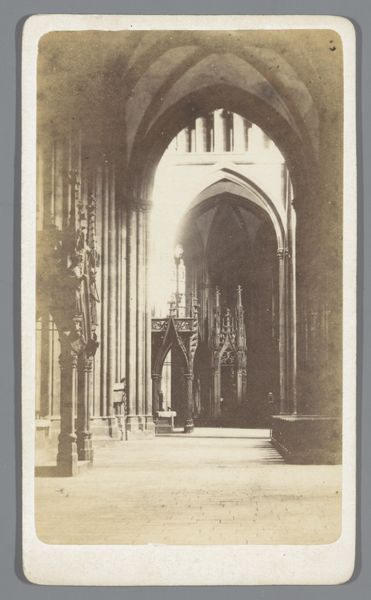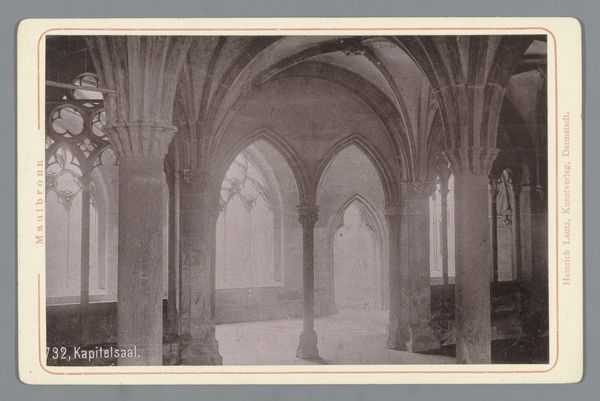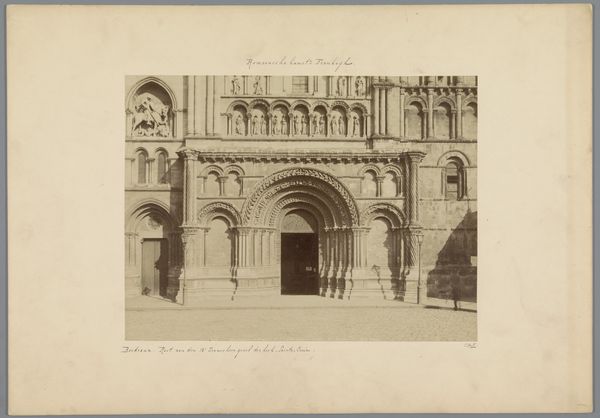
print, photography, architecture
#
medieval
# print
#
landscape
#
photography
#
romanesque
#
19th century
#
cityscape
#
architecture
#
realism
Dimensions: height 95 mm, width 147 mm
Copyright: Rijks Museum: Open Domain
Editor: Here we have a photograph, seemingly from around 1895 to 1900, depicting the cloister of Maulbronn Abbey. I find the repeating arches and strong lines incredibly evocative; it almost feels like stepping back in time. What strikes you most about this image? Curator: For me, this image is powerful because it captures the intersection of medieval architectural power and 19th-century photographic technology. Look at how the photographer chooses to frame the cloister; not just as a beautiful space, but as a testament to institutional longevity. It reminds us that monasteries, particularly in the Romanesque period, held significant social and economic influence. What do you think the photographer was trying to say about the role of religious institutions? Editor: Perhaps the photographer aimed to capture the enduring influence of the church even amidst social changes, showcasing its stability compared to the rapidly modernizing world? The Abbey does exude an almost timeless quality. Curator: Exactly. And think about who would have viewed this photograph at the time. Was it intended as a souvenir for tourists, reinforcing a romanticized view of the past? Or was there a deeper engagement with the legacy of power structures that these spaces represented? These are postcard prints - part of the burgeoning tourist industry of the time. Did this industry contribute to shaping collective memories or even reshaping historical narratives around sites of religious or national importance? Editor: That is a great question that highlights the intersection between historical documentation and social influence in shaping perceptions. Curator: It also compels us to think of historical perception itself. That even this image plays a part in reinforcing contemporary biases. Editor: Right! Considering its public role, its history, its many lives and purposes, and its presentation through a modern lens really alters my perception of the photograph!
Comments
No comments
Be the first to comment and join the conversation on the ultimate creative platform.
